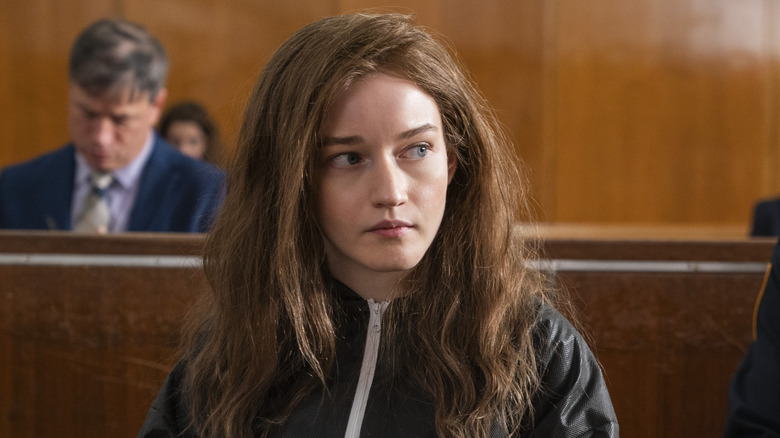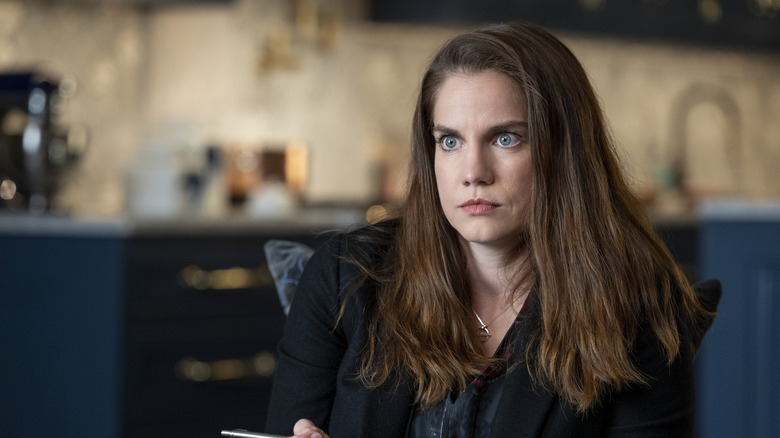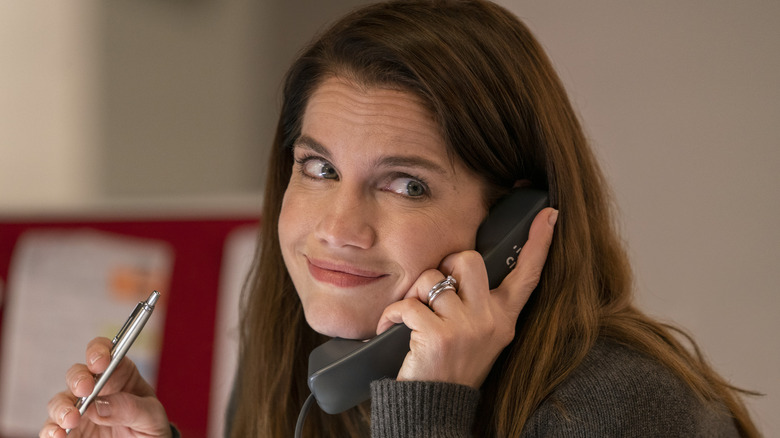Inventing Anna: How Accurate Is The Netflix Series To The True Story?
While true crime has been quietly popular for decades, it's safe to say that it has hit the mainstream in a very big way. Between Netflix's "Monster: The Jeffrey Dahmer Story" and HBO's "Love and Death," some of the biggest shows on television are retelling tales of murder and the macabre. However, there are other avenues that true crime TV can take, like that of "Inventing Anna."
Using a tried and true approach, "Inventing Anna" sees journalist Vivian Kent (Anna Chlumsky) interviewing Anna Sorokin, a.k.a. Anna Delvey (Julia Garner) from prison and slowly weeding out her life's story, sifting through fact and fiction in an effort to get to the heart of Anna's heavily fabricated persona.
However, considering the fact that the series was hit with a lawsuit, viewers might find themselves wondering how much of what they're seeing in "Inventing Anna" is itself real and which elements are just there to make the series more palatable. Esther Haynes, who is herself a real-life investigative journalist, told Netflix that while there are definitely parts of the popular series that jive with her experience, other aspects she had a much harder time believing.
Haynes related to some elements of Vivian and Anna's story
Esther Haynes developed an extensive relationship with convicted murderer Michael Alig, best known as the inspiration for the movie "Party Monster." Haynes, who visited Alig in prison many times while putting together her own story, says that one thing that "Inventing Anna" definitely gets right is the lengthy and often tedious process of prison visits.
Haynes also says that she got access to Alig in the same way that Vivian does with Anna in "Inventing Anna," simply by sending a letter and reaching out. However, the journalist pointed out that there were other aspects of the Netflix series that didn't seem quite so authentic.
The classic supportive work-friends angle of "Inventing Anna" didn't make sense to Haynes at all. "I mean, they're all just sitting around, and when she comes in, they're, like, chiming in," she told Netflix. "Like, if they're real journalists, they would be working on their own stories. The way she described them as Pulitzer Prize winners and things like that, they're not going to just be sitting there," she concluded.
Inventing Anna got the cult following of criminals right
One of the most jarring elements of true crime is how even the worst criminals often seem to gain a dedicated cult following, and Esther Haynes says that based on her experience, "Inventing Anna" nailed this element. "Tons of people did write to Michael [Alig] and were fans of Michael, which was disturbing in some ways," she explained. "And then there were other people who were like, 'Michael is my idol, and I want to be like him. And he's a gay icon, and he's a god' — and just not acknowledging that he killed somebody," she added later. "And so, I was sort of in between those two worlds."
Finally, Haynes also said that, in the end, like Vivian, she remains unbiased about the facts, no matter how close she gets to the subject of a story. "There's definitely a power differential," Haynes said. "And a sense of wanting to help them. But at the same time, you need to keep your journalistic integrity. I didn't want to promise too much or make them feel like I could save them because I couldn't."
Haynes' subject, Michael Alig, died in December 2020, though he lived for years as a free man after his release in 2014. Anna Sorokin, on the other hand, remains in a more complicated state, legally speaking. Despite being released from prison in February of 2021, she was rearrested by ICE six weeks later for an expired visa. Since then she was subsequently released on bail in October 2022 but remains on house arrest with no access to social media.


